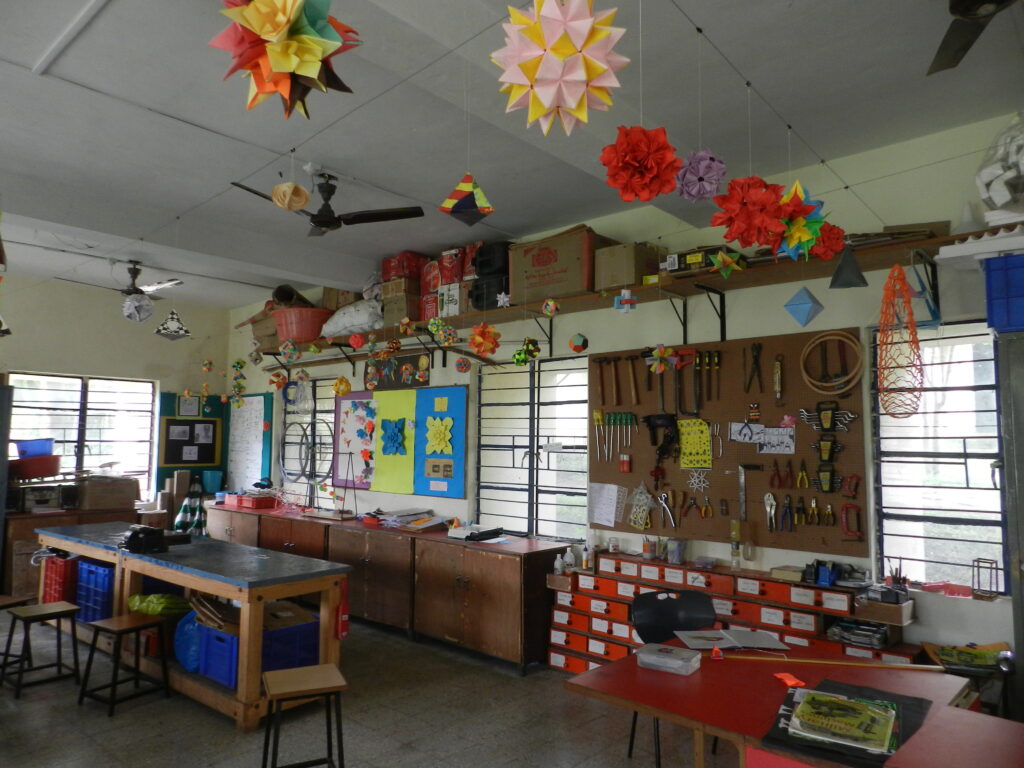FUSION FEST
Brief History
The Student Council first proposed the idea of a “Fusion Fest” in 2017 to enable students to explore subjects that are not a part of their formal curriculum in school. Preliminary discussions led to the idea of a free format platform. Under the Fusion Fest, students (singly or in small groups) could take up a topic in an interdisciplinary area of study, identify the relevant resources (books, articles, videos) and make a presentation in school after adequate research and preparation. Each group would associate with one or more teachers for guidance, depending on their availability and interest.
After a gap of a year, three class 12 students took up the responsibility of organizing the events under Fusion Fest. Based on the previous experience, emphasis was given to the following aspects in researching and preparing for the Fusion Fest presentations:The work should involve a certain level of in-depth study, along with the honing of presentation skills and public speaking skills.This period of study should be an opportunity for students to apply themselves purposefully and closely to the relevant reading and research.
The whole experience should enable students to bring rigour to their thinking about issues.The following topics were taken up in Fusion Fest this year. Each topic below is followed by a brief write-up by the participating students.
Photography & Political Expression
The Pixelated Revolution: a collection of videos of Syrian civilians filming their own deaths with their mobile phones woven together in a narrative by Lebanese artist Rabih Mroué.
One watches this film transfixed, through the eyes of the victim, through the camera of the mobile phone in his hand pointing right at the sniper who raises his rifle to aim directly at the camera, and its owner. Then, a bang! And everything goes black.
When I saw The Pixelated Revolution for the first time, I was overwhelmed. How could a single video have such a profound impact on me? It was as though I was actually there in Syria, in the midst of the conflict. I was immediately intrigued by questions about the role of the spectator and how visual media can in turn challenge the distant, aloof spectator. I recognized the power of visual media – how it could make a person feel, and how it has the power to reflect and shatter the political sphere that envelopes us as a society. With this realization, I thought I would work on this project – an exploration of how photography connects with political expression to create subversive and impactful works of art.
Nanotechnology
When I initially started researching, I was captivated by the world of nanotechnology and its examples in nature, which had taken nano-engineering to the limit and created such a remarkable array of systems. From hydrophobic properties to structural color, from magnetic features to adhesive strength, nature had mastered this art. And the fact that these systems were all around us and that we could observe and learn from them seemed very exciting to me. I decided that I would cover two aspects: nano-systems in nature and some of its applications.
Behavioral Economics
Conventional economic theory talks about how human consumers are rational creatures. It assumes that we make deliberate and rational judgments, whether in life or in the market. On the other hand, behavioral economics, an integration of psychology and economics, argues that this assumption of rationality is not true and that the brain, which is thought of as a complex and intelligent system, is actually quite irrational.
We decided to narrow our focus to the irrationality of the human brain (The Story of Success by Malcolm Gladwell), how the human brain actually makes decisions (Daniel Kahnmen’s research), and how snap judgments affect us and how they can be better than “thought out” judgments (Blink by Malcolm Gladwell).
Film & Poetry
Ours became an exploratory process into film and poetry that tapped into the subjective interpretations of the participants. The selected poems and films illustrated the concept of an open-ended interpretation we had been exploring. The hope was that the audience would be able to engage with the whole experience in the manner we had envisioned.
The selected poems and films included:
“This is Just to Say” and “Poem” by William Carlos Williams
“In a Station of the Metro” by Ezra Pound
“This is a Photograph of Me” by Margaret Atwood
Loving Vincent
Paterson
Gully Boy
Food Facade
Our food has been adulterated by substances which are toxic to our health as well as to the environment. During this Fusion Fest, we wanted to unravel and unmask some of the truths about what enters our bodies. Our sub-topics were “A Study on Sugar” and “Junk Food Genocide”.
Controversial Historical Personalities
We took up this topic because we wanted to begin to understand the motives and actions of some historical leaders who have been controversial. In the course of our research, we closely examined the idea of authority and what it means to be a leader.
Music & Psychology
This topic brought together two fields I felt drawn to and I thought it would be interesting to explore their connections. After the initial round of research, we identified and discussed the aspects that we wanted to explore further and eventually include in our presentation. These were:
How music affects mood
The neuroscience of music
Music therapy
The music industry
Magic & Psychology
It was quite natural for me to take up this topic for Fusion Fest as I had been practising and performing magic for about 3 years. I felt that I had never really explored the field in depth in order to understand what really made a magic trick work. I wanted to understand why certain characteristics of a trick made it more deceptive and what kinds of psychological impact they had on the audience.

